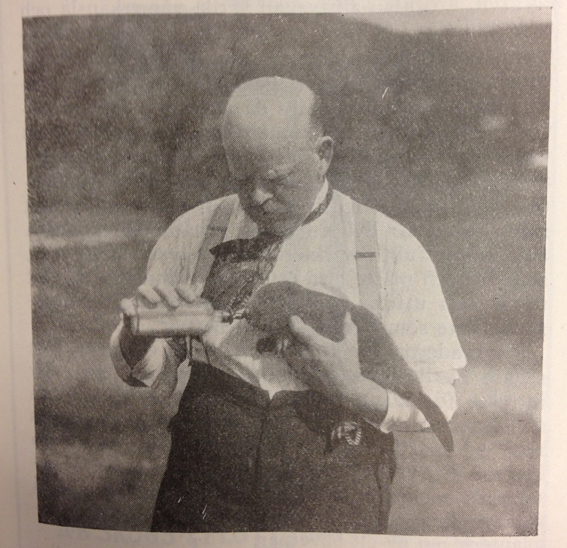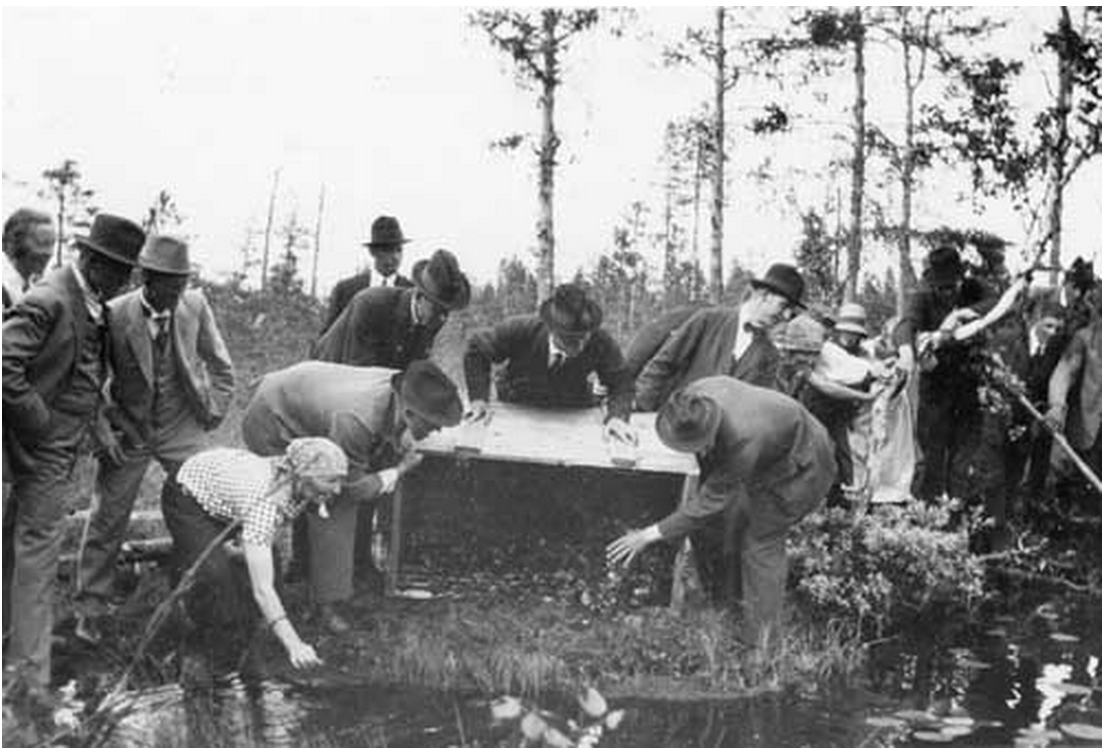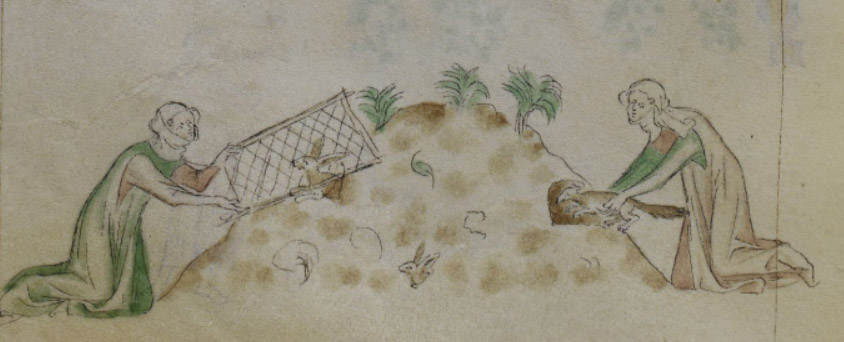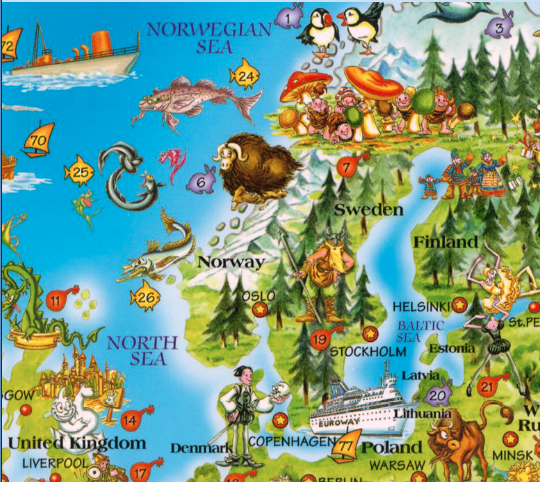
More muskox maps
I posted before about finding a muskox on a children’s map of Sweden. I’ve had a continued interest in exploring these kind of maps images and how animals are attributed to certain areas. Searching the internet for children’s maps, I found quite a few that include animals alongside cultural symbols to represent place.
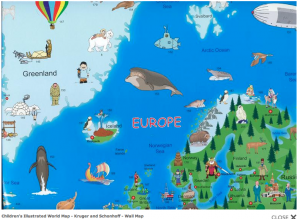
Two of the ones I’ve seen show muskox in Norway. One is the Krüger and Schönhoff Illustrated World Map, which is available in 9 languages. It’s a decently sized wall map at 135 cm x 95 cm. It shows the whole northern half of Norway covered in snow/ice with a muskox in a spot representing where the reintroduced herd lives in Dovrefjell. I’m not sure what the Norwegians would think about half of their country being shown as ice/snow covered – it certainly isn’t in the summer months – but I can see why outsiders would think of it that way.
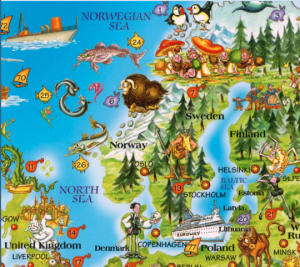
Dino’s Children’s Map of the World likewise has a muskox in the same place, although in this case, the muskox lives just south of trolls making merry amongst the mushrooms 🙂 There is a interesting blend of fact and fantasy going on in this map.
In both of these cases, a muskox represents the fauna of central Norway. Just as muskox has indeed come to represent that geography on local communal banners and souvenirs, the muskox is representing that geography to the wider world. These two maps appear to be some of the most available and best selling children’s maps on the market today. Children who grow up with these maps will understand the muskox as a normal part of Scandinavia.

The inclusion of muskox as a prominent symbol of Norway isn’t of course consistently the case. The other maps I’ve seen don’t have this representation, although they are always interesting in their own right. For example, the Dino Animals of the World Map shows a noble crayfish instead of a muskox in the northern part of Norway/Sweden. This particular European species is currently declining because of a crayfish plague brought by introduced American crayfish which carry the disease but are immune to it. Several reintroduction projects have been undertaken to re-populate areas devastated by the plague, but these have had mixed success because of continued presence of the introduced crayfish disease. And almost every map I’ve seen places the European bison, which was extinct in the wild in 1927 and later reintroduced from zoo-bred individuals, as the symbol for somewhere around Poland where they were reintroduced in large numbers.
Putting animals on maps like this is not new. The Hereford Mappa Mundi shows a bear and an ape(!) in the Scandinavian peninsula near a man on skis with ski pole. An inscription for Norway from Fra Mauro’s Mappa Mundi from around 1457 says that the area has “many new kinds of animals, especially huge white bears and other savage animals.” I also previously discussed Olaus Magnus’ Carta Marina (1539), which features a plethora of animals including beavers. These medieval maps mixed fantasy and fact, much like the muskox and trolls on the current Dino map. I would say that since medieval times, mapmakers in the Western European tradition have had a propensity to put animals that they consider noteworthy or characteristic on maps. The latest incarnations of children’s maps featuring newly reintroduced muskox and European bison are simply a continuation of the tradition. The inclusion of muskox on these children’s maps tells us that modern mapmakers believe muskox are noteworthy and characteristic as Norwegian fauna.
